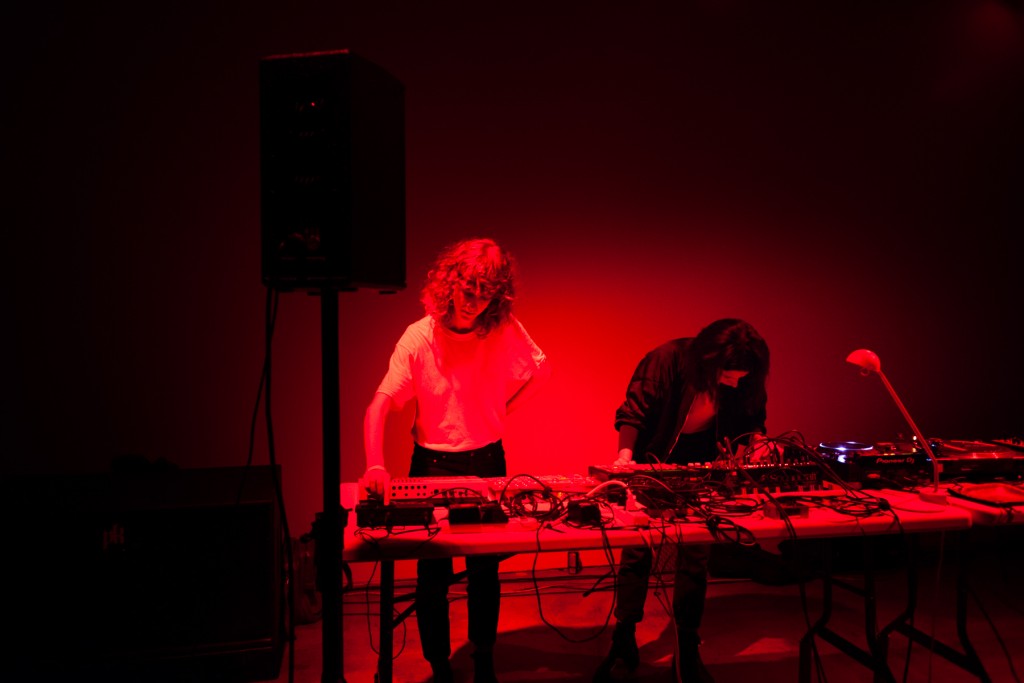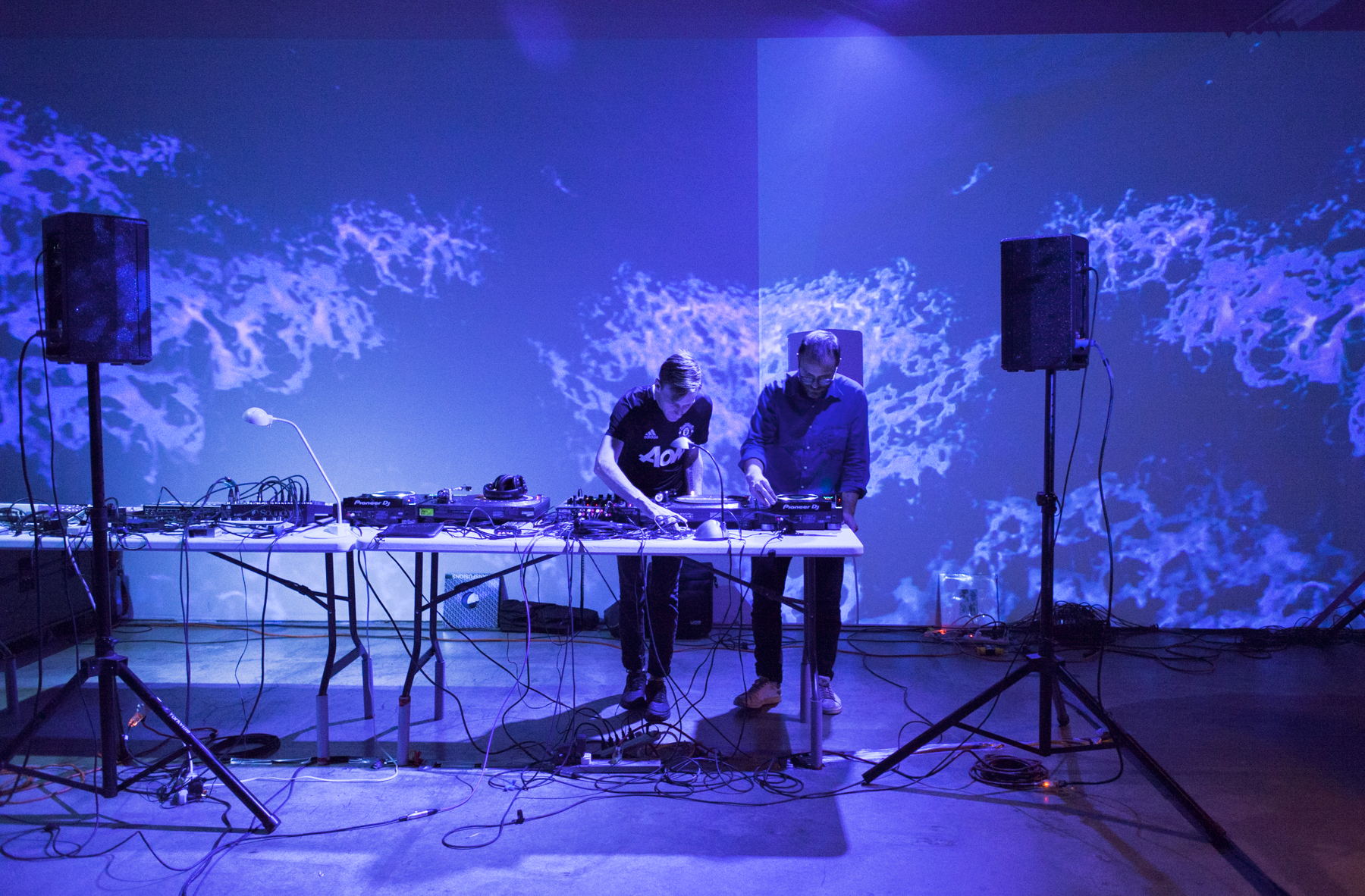The moon was a ripe yellow crescent through the balding trees that surrounded VIVO Media Arts — it was as if the sky itself knew how magical Destroy Vancouver XVIII promised to be. Since 2012, curator John Brennan had been showcasing experimental music acts from Vancouver and beyond through DV, while co-curator Elisa Ferrari came on board in 2015 to produce a final year of performances. The evening was the eighteenth and final collection of acts presented by DV and I was ecstatic to bear witness to such a unique piece of Vancouver music history.
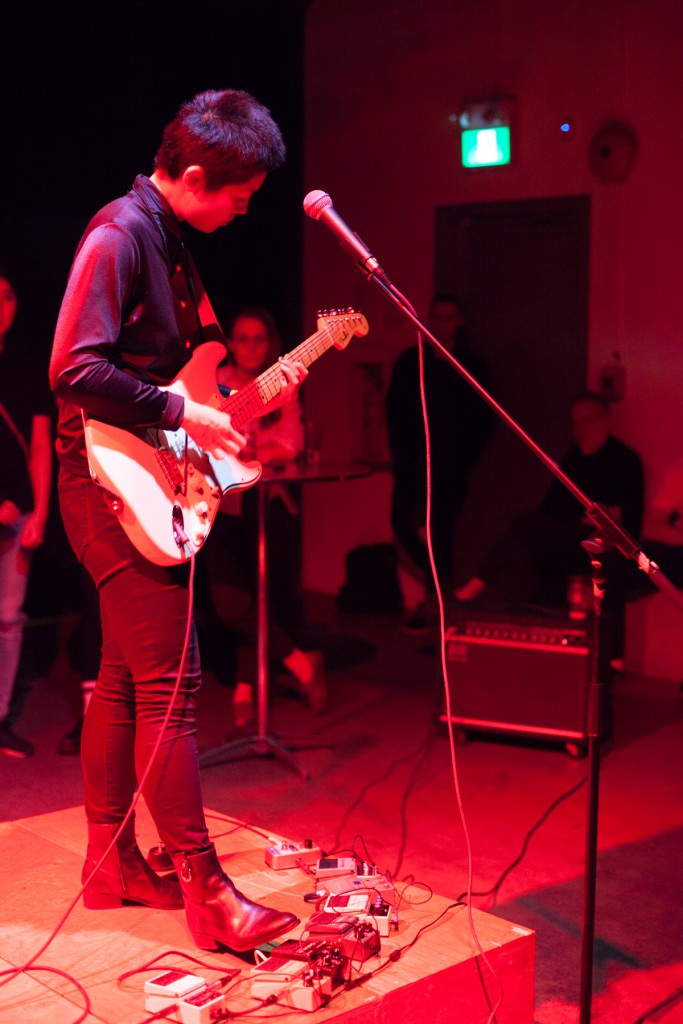
The show was sold out, the venue precariously over capacity. It was amazing to see such a diverse group — young adults, familiar faces from shows around town, and an older contingent of folks, up way past their kids’ bedtime. Clearly, DV was doing something right to make the sometimes obscure genre of experimental electronic music accessible to a broad audience.
hazy, the solo project of Late Spring’s KC Wei, was up first. Wei stood alone on a raised platform under a red spotlight with her guitar, a few pedals, and a microphone. She played one long waterfall of sound as I sat on the floor and closed my eyes. hazy sounded the way being underwater does: ears submerged in bathwater, the echoing, in-utero sway of delayed, overlapping splashes and scattered droplets.
Between sets, projections created by Emily Thacker flowed over three walls. Called “visual melodies,” the visual soundscapes used colour, shape, speed, duration, and intensity to mimic the effects of music’s rhythm and harmony. These visuals ranged from home-video-esque scenes overlaid with translucent coloured blocks to TV static calculated into geometric lines.
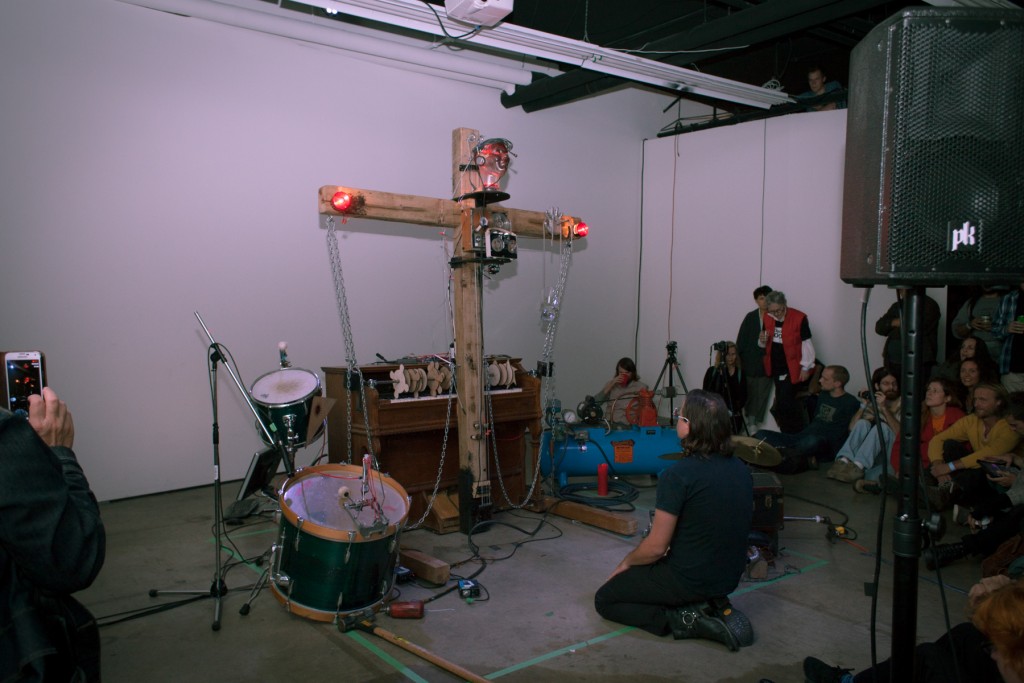
Whatever level of relaxation that resulted from hazy’s set dissipated when Friends+War took the stage with his crucificial instrument. Dan Leonard’s musical idolatry was unsettling: he kneeled in front of a setup which featured a cross strung like a double bass bearing a clear plastic mannequin head, mounted in the center of a piano. To the left was a shambled drum kit, to the right, an air compressor, a lit red candle, and the seat of a motorbike with another plastic head.
A few minutes in, the cross tipped forward towards the kneeling Leonard –– a feature of the apparatus –– and one of the audience members jumped up to stop it falling on the artist. The rest of us gasped audibly. It took a second to see that the lean was controlled and intentional. Tensions ran high after that and I could feel the whole audience fear the automaton’s unforeseeable actions. I caught myself beginning to panic about the proximity of the lit candle to the air compressor. Unfortunately, parts of the machine failed during the performance: a mask broke as Leonard tried to put it on and a tape from one of the two reel-to-reel players fell to the floor and rolled off into the dark. However, this “breakage” opened up more speculation about the nature of the strange machine and its apostle.
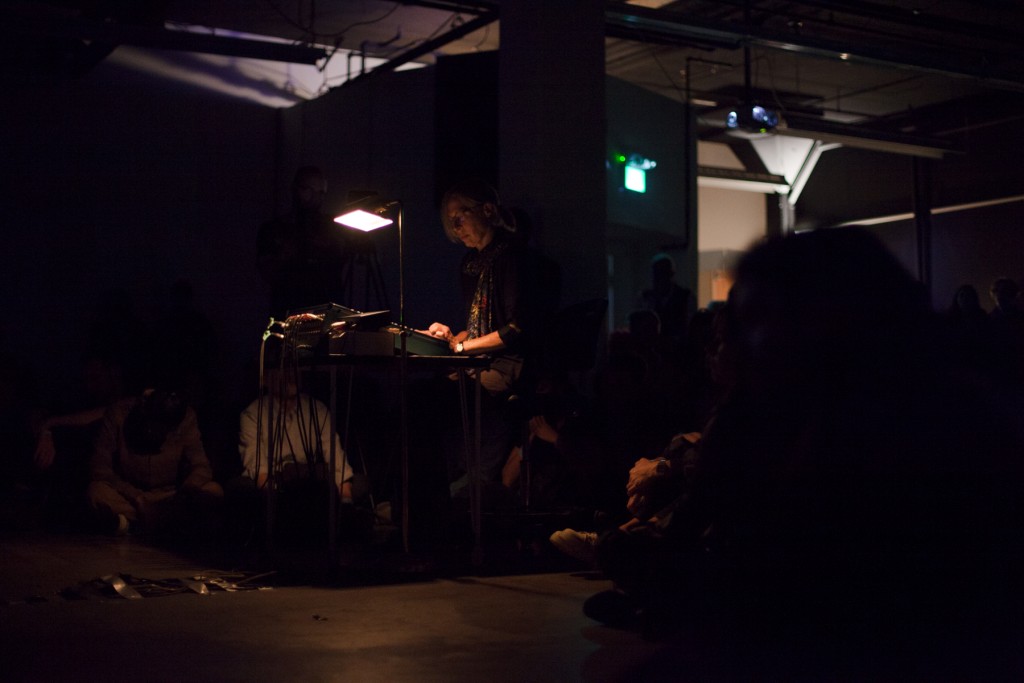
The third performer was Christina Kubisch, and we were plunged into darkness, encouraged to sit on the floor and to close our eyes. Kubisch told us there would be nothing to see, that she was going to play only sounds that she had recorded. She sat at a mixing board under a single lamp, like a typist. If someone were to ask me what I thought the dark sounded like, I would tell them to listen to the sounds that Kubisch played for us. The sounds were a long meditation on what might be called white noise, but I want to call black noise: sounds she captured, muddled and restructured into indiscernibility.
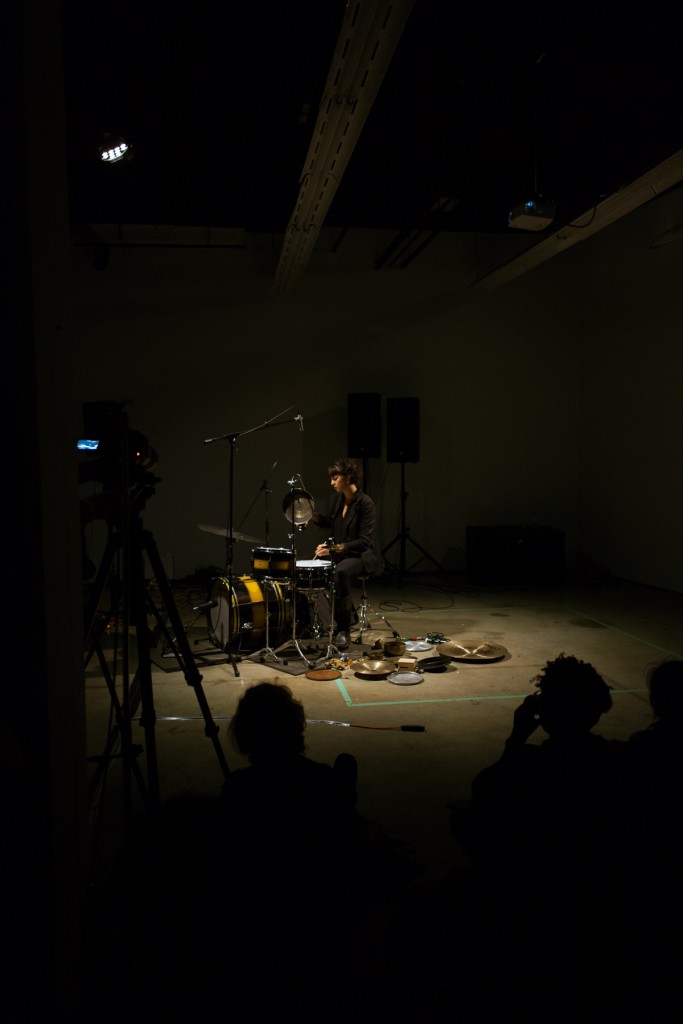
After an intermission, Katharina Ernst sat down behind her golden, throne-like drum kit, surrounded by a collection of cymbals and brass bowls that carpeted the floor like chainmail. Ernst provided the percussive reply to hazy’s guitar and vocal set. Ernst’s movements were calculated and elegant. She wielded her drumsticks like aspergilla, christening the drums with sound.I felt like I was witnessing a mythological rite, some calling to or honouring of a god as she placed cymbals on top of the drums, spilled the cups on the ground, spun still more cymbals on the floor and caught them before they dropped. Each action produced a different noise yet the entire performance seemed to be one continuous sound.
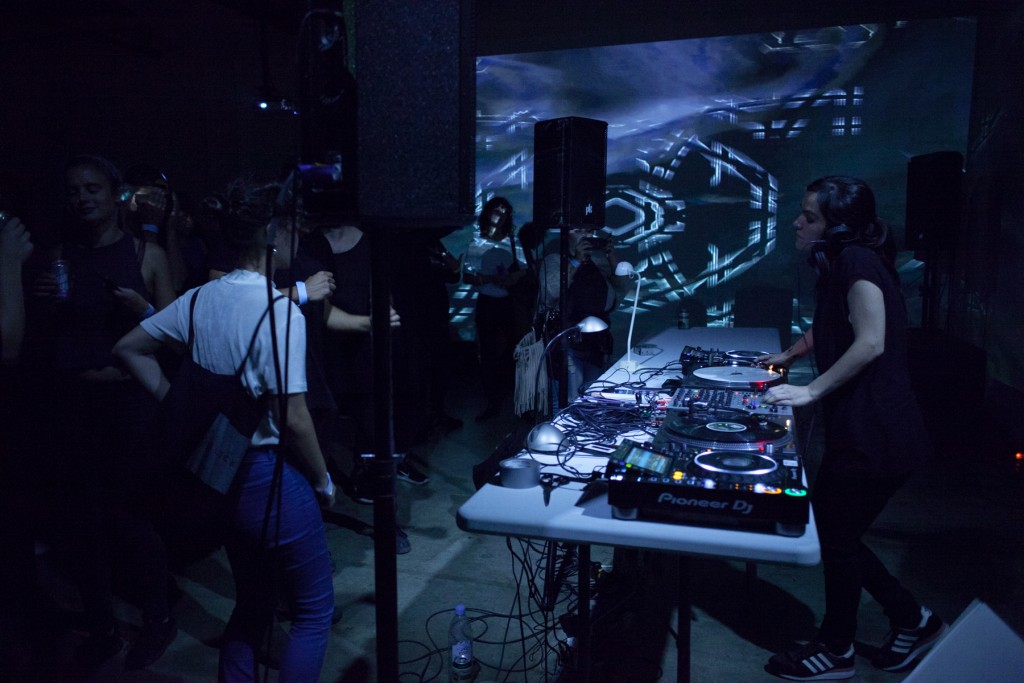
The final two acts, Vancouver duo minimal violence and renowned techno artist Adriana Lopez, changed the pace of the evening with danceable sets. minimal violence played amidst harsh red light and the space was transformed into an edgy underground club. Lopez’s set was accompanied by stormy visuals which gave the dancers’ shadows a ghostly feel. VIVO became a kind of techno dungeon as Lopez’s dark noises enveloped the crowd. Lopez moved like a sorceress over her equipment. She seemed to be insider of herself and her music, fully focused on the creation of the sound. I felt emotionally spent by the time Lopez took the stage and overwhelmed by the convoluted music and undulating crowd that remained. I left the dancers to complete the dark ritual that Lopez had initiated and let my oversteeped nerves recuperate after the incredibly sensory evening.
